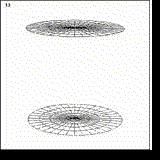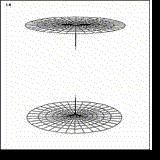Hello everyone! I am yet another person in the world seeking the knowledge to a better understanding of the workings involved pertaining to the "Water Fuel Cell" technology invented by Stanley A Meyer. Like most of you, I have read every single patent, document, video, forum thread, and anything I could get my hands and eyes on that could be even loosely related to this field of research. The search for the secret to Stan's device eludes me to this day, though, I have stumbled upon a bit of literature leading me to believe that I have found the secret process that was missing from Stan's explanations. It's funny now that I look over the documentation again how he practically hands it to you and yet keeps out the one thing that explains how it works. It's simply electrolysis aided by sonochemistry and cavitation.
One of the clues was the fact that his designs had evolved from a non-resonant circuit to a more efficient LC design. His emphasis before the invention of the VIC, was the "resonant cavity" which remains basically the same throughout the revisions over time. Part of his description of the process involves the frequency wavelength in some way matching the distance between the exciter plates, creating an oscillation of particles bouncing back and forth between the plates. Not knowing of sonochemistry and cavitation may lead a person to over analyze the wrong aspect of the over all design.
There also is the famous slots cut out of the tubes seen in the demo cell which is never explained in any document other than speculation. Like any resonant cavity, they all have to be tuned. If a part of the cavity is out of tune or harmony, the oscillations are dampened or changed all together. A simple demonstration of this is to blow air over the top of a bottle, empty or filled with a liquid. When you blow it just right, you can hear the resonant cavity resonating. Change the level of the liquid , you change the pitch or frequency of the oscillation. Notice how blowing harder does not change the pitch, but, increases the amplitude or volume of the sound.
Another clue was a statement or rather a question posted by "RAVZZ" at overunity.com concerning an explanation of a glow coming from his cell tubes when viewed in complete darkness. I believe this to be "sonoluminescence" which is an effect of sonochemistry and cavitation. It would also explain the unusually large bubbles coming from his cell tubes. It would be nice to have Dave Lawton confirm this with his setup.
We can also look at other designs from other people such as Puharich and Boyce only to see the exact same process is occurring only with slight design choices. It is evident that they all utilize harmonic frequencies or multi frequency oscillations which aid in amplification of the targeted operating frequencies causing cavitation. A simple test of this is to use any polyphonic instrument sounding two or more tones. The more tones added, the louder the sound becomes. If the tones are in harmony with themselves and a close by object such as a tuning fork which is also in tune or harmony with the tones, the tuning fork will resonate more with each added tone or overtone.
There is a ton more to explain and examine but I would rather keep this post short and let you do the reading of the available documention and give your take on it.
CHEERS!
HairBear
One of the clues was the fact that his designs had evolved from a non-resonant circuit to a more efficient LC design. His emphasis before the invention of the VIC, was the "resonant cavity" which remains basically the same throughout the revisions over time. Part of his description of the process involves the frequency wavelength in some way matching the distance between the exciter plates, creating an oscillation of particles bouncing back and forth between the plates. Not knowing of sonochemistry and cavitation may lead a person to over analyze the wrong aspect of the over all design.
There also is the famous slots cut out of the tubes seen in the demo cell which is never explained in any document other than speculation. Like any resonant cavity, they all have to be tuned. If a part of the cavity is out of tune or harmony, the oscillations are dampened or changed all together. A simple demonstration of this is to blow air over the top of a bottle, empty or filled with a liquid. When you blow it just right, you can hear the resonant cavity resonating. Change the level of the liquid , you change the pitch or frequency of the oscillation. Notice how blowing harder does not change the pitch, but, increases the amplitude or volume of the sound.
Another clue was a statement or rather a question posted by "RAVZZ" at overunity.com concerning an explanation of a glow coming from his cell tubes when viewed in complete darkness. I believe this to be "sonoluminescence" which is an effect of sonochemistry and cavitation. It would also explain the unusually large bubbles coming from his cell tubes. It would be nice to have Dave Lawton confirm this with his setup.
We can also look at other designs from other people such as Puharich and Boyce only to see the exact same process is occurring only with slight design choices. It is evident that they all utilize harmonic frequencies or multi frequency oscillations which aid in amplification of the targeted operating frequencies causing cavitation. A simple test of this is to use any polyphonic instrument sounding two or more tones. The more tones added, the louder the sound becomes. If the tones are in harmony with themselves and a close by object such as a tuning fork which is also in tune or harmony with the tones, the tuning fork will resonate more with each added tone or overtone.
There is a ton more to explain and examine but I would rather keep this post short and let you do the reading of the available documention and give your take on it.
CHEERS!

HairBear







Comment